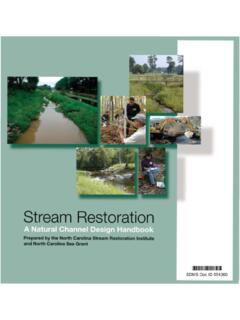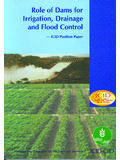Transcription of GUIDE TO WIND CLASSIFICATION - monier.com.au
1 GUIDE TO WIND CLASSIFICATION . v 01 Sept 2014. MONIER GUIDE TO WIND CLASSIFICATION . 2. GUIDE TO WIND CLASSIFICATION . Introduction An accurate wind CLASSIFICATION is essential input to It is important to categorize each building on a case-by-case determining the installation standard to ensure that basis. Each site should be assessed individually for its wind the performance of a tiled roof is not compromised by CLASSIFICATION . Each building must be assessed for compliance environmental conditions. with geometry and for evaluation of pressures. It is normal practice that the advice of a suitably qualified Therefore, Monier Roofing does not accept liability for any building engineer be sort to accurately determine the Wind loss or damage suffered as a result of any errors in the CLASSIFICATION for a site.
2 Interpretation or application of this design GUIDE . Monier Roofing recommends that the advice of a suitably qualified The information provided in this GUIDE has been created building engineer is sort in assessing the wind CLASSIFICATION of to assist the designer or the main contractor in their a particular site. responsibility in determining the appropriate wind CLASSIFICATION (or design wind velocity (m/s)) for a site. Also note that the process used in the GUIDE is an approximate method for estimating wind classifications for residential structures only. For full analysis refer to Australian/NZ Standards;. AS/NZS :2011 and by its Amendment 2 (2012);. Definition of Terrain category - Structural design actions, Part 2: Wind actions; This Standard is generally applicable to determining the wind loads on any structure.
3 AS 4055-2002: Wind loads for housing . In NZ, the relevant standard is NZS 4203. MONIER GUIDE TO WIND CLASSIFICATION . 3. What is wind CLASSIFICATION Step 1. Geographic wind speed region FIGURE 1: Wind Speed Region The wind CLASSIFICATION relates to gust wind speeds (m/s) that affecting a given site. The determination of a wind CLASSIFICATION is critical in ensuring that a building is designed and constructed to the level appropriate to withstand MORETON. the wind forces it will be subjected to. The wind classifications defined in the standards are summarised in the Table 1 below: BORROLOOLA. KUNUNURRA. TABLE 1 WIND CLASSICATION CONVERSION TABLE ATHERTON. BURKETOWN. WIND CLASSIFICATION Gust Wind Speed PORT HEDLAND 20.
4 COLLINSVILLE. Regions A and B Regions C and D (m/s). 20 MARBLE BAR. N1 (Non-Cyclonic) N/A W28. MILLSTREAM. BILOELA. N2 (Non-Cyclonic) N/A W33 BUNDABERG. 25 . N3 (Non-Cyclonic) C1 (Cyclonic) W41 CARNARVON. 25 . N4 (Non-Cyclonic) C2 (Cyclonic) W50. N5 (Non-Cyclonic) C3 (Cyclonic) W60 BOURKE 30 . N6 (Non-Cyclonic) C4 (Cyclonic) W70 30 GREEN. HEAD. Determining a wind speed CLASSIFICATION The selection of wind speed CLASSIFICATION for a house depends on the 50km conditions at the site of the house. The CLASSIFICATION shall be determined from 100km Table 2 on Page 8 using the following site conditions: STEP 1 The region where the site is located as defined in Figure 1 45 . (Region A B C or D as given in AS/NZS ). 150km NON-CYCLONIC CLASSIFICATION CYCLONIC CLASSIFICATION .
5 STEP 2 The terrain that surrounds or is likely to surround the site Region A Region B Region C Region D. within the next 5 years, as defined in Figure 2 on Page 4. Please note: Specific design wind speed recommendations are available for some regions STEP 3 The topography of the site, as defined in Figure 3 on Page 5 via government recommended websites. Refer to the links below for specific regionally information;. STEP 4 The shielding that a structure is subjected to, as defined in Figure 4 > SOUTH AUSTRALIA. on Page 6 FS PS or NS MONIER GUIDE TO WIND CLASSIFICATION . 4. Step 2. Selection of terrain category Terrain categories are used for determining a structure's It shall be based on the likely terrain five years after design.
6 1. Supporting Notes: TC established trees may be considered as obstructions for evaluation of terrain Well exposure to wind as a result of terrain that surrounds it. The terrain category for a housing site shall be identified by category. the notation TC1, , TC2, or TC3 and shall be The terrain category for a housing site is a measure of the lowest effective surface roughness from any radial direction determined as follows: TC1. In selecting a terrain category due regard to the permanence of the obstructions should be made. within a distance of 500 m of the proposed housing site. TC 1. FIGURE 2: Terrain Category TC. TC. 1. TERRAIN CATEGORY 1. Very exposed open terrain with few or no obstructions and enclosed limited sized water surfaces at serviceability and ultimate TC.
7 Wind speeds in all wind regions, flat, treeless, poorly grassed plains, or river , canals, lakes and enclosed bays, extending 1. less than 10 km in the wind direction. TERRAIN CATEGORY TC. Open water surfaces subjected to shoaling waves at serviceability and ultimate wind speeds in all wind regions, near- TC2. shore water, large unenclosed bays on seas and oceans, lakes and enclosed bays extending greater than 10 km in the wind direction. TC. TC2. TERRAIN CATEGORY 2. TC2. Open terrain including grassland with well-scattered obstructions having heights generally from m to 5 m with no more than two obstructions per hectare, farmland and cleared subdivisions with isolated trees and uncut grass. TERRAIN CATEGORY TC. TC 2. Terrain with a few trees and/or isolated obstructions.
8 This category is intermediate between TC2 and TC3 and represents the terrain in developing outer urban areas with scattered houses, or large acreage developments with fewer than TC. TC 2. 10 buildings per hectare. TERRAIN CATEGORY 3 TC Terrain with numerous closely spaced obstructions having heights, generally from 3 m to 10 m. The minimum density of obstructions shall be at least the equivalent of 10 house-size obstructions per hectare, suburban housing or light TC3. industrial estates. TC3. TC 3. MONIER GUIDE TO WIND CLASSIFICATION . 5. Supporting Notes: Where the water body is large ( the wind has been blowing over the water for (i) Fewer than 2 large trees per hectare can be categorized as TC2. In urban situations, roads, rivers, small lakes or canals less than 200 m wide shall more than 10 km), then wind has the chance to develop long wavelength waves that (ii) Between 2 and 10 large trees per hectare can be categorized as be considered to form part of normal Terrain Category 3' terrain.
9 Parks and other will shoal on reaching the shore irrespective of the wind. Hence: (iii) More than 10 large trees per hectare can be categorized as TC3. open spaces less than 250 000 m2 in area shall also be considered to form part of (a) Water bodies less than 200 m wide in the direction that the wind is blowing normal Terrain Category 3' terrain provided they are not within 500 m of each other, In some cases, the 500 m radius circle may contain combinations of smooth to affect a site do not affect the terrain category. or not within 500 m of open country. features. For example, a small lake with diameter less than 200 m may be (b) W. ater bodies greater than 200 m wide, but less than 10 km wide in the adjoined by a park also with width less than 200 m.
10 However, the combine Housing sites less than 200 m from the boundaries of open areas larger than direction that the wind is blowing to affect a site are deemed to be Terrain width of smooth features is greater than 200 m and the lake should be 250 000 m2, golf courses, that are completely surrounded by urban terrain, Category 1. considered as part of the park, giving limiting terrain category for the building at shall be considered to have the terrain category applicable to the open area itself (c) Only water bodies greater than 10 km wide in the direction that the wind is the centre of the 500 m radius circle as Terrain Category 2. Shielding provisions may still apply to these sites. blowing to affect a site are deemed to be Terrain Category Housing sites less than 500 m from the edge of a development shall be classified as Terrain Category addresses acreage subdivisions where the house density is less the applicable terrain that adjoins the development, TC1, , TC2, or than 10 per hectare.




